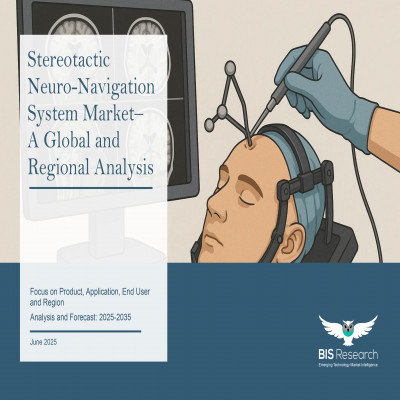Introduction to Europe Stereotactic Neuro-Navigation System Market
The Europe stereotactic neuro-navigation system market is projected to reach $1,014.2 million by 2035 from $269.0 million in 2024, growing at a CAGR of 13.14% during the forecast period 2025-2035. The growing prevalence of neurological illnesses and the obvious benefits of navigation-assisted operations over traditional surgery have been driving double-digit growth in the stereotactic neuro-navigation industry in Europe. Advancements like augmented reality, machine learning, and artificial intelligence are expanding the use of these platforms and improving surgical accuracy. There is now a greater need for high-precision navigation technologies due to the move towards less intrusive procedures. Another factor supporting market expansion is an ageing population, which is contributing to an increase in age-related neurological diseases.
The high cost of sophisticated navigation systems, the difficulty of integrating them with current IT and imaging systems, and the possibility of intraoperative problems, however, can all be barriers to adoption. Notwithstanding these obstacles, continued technological advancements, pro-EU regulatory frameworks (such as streamlined MDR pathways), and the expansion of neuro-navigation into related specialities like spinal and craniofacial surgery are expected to maintain momentum and spur additional expansion throughout Europe.
Market Introduction
The market for stereotactic neuro-navigation systems in Europe is expected to develop significantly due to the rising demand for minimally invasive interventions and precision-guided neurosurgery procedures. These systems are becoming more and more popular for deep brain stimulation, tumour biopsies, epilepsy surgeries, and functional neurosurgery because they offer real-time, three-dimensional anatomical mapping and trajectory planning. Because of the region's ageing population and increased prevalence of neurological conditions including epilepsy, brain tumours, and Parkinson's disease, hospitals are investing in cutting-edge navigation systems that lower operating risks and enhance patient outcomes.
Technological advancements are driving market expansion: augmented reality overlays, AI-powered planning algorithms, and smooth integration with intraoperative MRI/CT scanners are improving surgical precision and workflow effectiveness. Cloud-based case management and remote collaboration technologies are also becoming more popular since they facilitate the sharing of expertise across many sites and expedite preoperative preparation. Adoption is also being aided by favourable reimbursement practices in Western Europe and rising healthcare spending in Eastern Europe.
Adoption obstacles still exist, though. Uptake may be slowed, particularly in smaller community hospitals, by high acquisition and software-licensing costs, complicated integration with legacy imaging and hospital IT systems, and the requirement for intensive surgeon training. Time and expense are increased by strict adherence to the EU Medical Device Regulation. In the future, it is anticipated that continued research and development partnerships among device makers, academic institutions, and healthcare providers—as well as initiatives to standardise interoperability—will expand clinical applications and propel steady expansion throughout the European stereotactic neuro-navigation market.
Market Segmentation:
Segmentation 1: by Region
• Europe
o Germany
o U.K.
o France
o Rest-of-Europe
Europe Stereotactic Neuro-Navigation System Market Trends, Drivers and Challenges
Market Trends
• Rising adoption of frameless, image-guided navigation systems offering enhanced ergonomics and workflow integration
• Integration with intraoperative MRI/CT and augmented reality for real-time anatomical visualization
• AI-driven planning tools that automate trajectory optimization and risk assessment
• Cloud-based platforms enabling multi-site data sharing and remote surgical planning
• Hybrid OR deployments combining neuro?navigation with robotics for end-to-end precision
Key Drivers
• Growing incidence of brain tumors, movement disorders, and epilepsy fueling demand for precise surgical guidance
• Shift toward minimally invasive neurosurgical techniques to reduce patient morbidity and hospitalization
• Increased healthcare spending and favorable reimbursement policies across Western and Eastern Europe
• Collaboration between device manufacturers and leading academic centers accelerating clinical validation
• Need for streamlined workflows to boost OR efficiency and reduce procedure times
Major Challenges
• High capital and recurring software-license costs limiting uptake in smaller hospitals
• Complex integration with legacy imaging equipment and hospital IT systems
• Steep learning curve for surgeons and OR staff requiring dedicated training programs
• Evolving EU MDR requirements prolonging time to market and increasing compliance costs
• Data-security and patient-privacy concerns around cloud-based case storage and analytics

